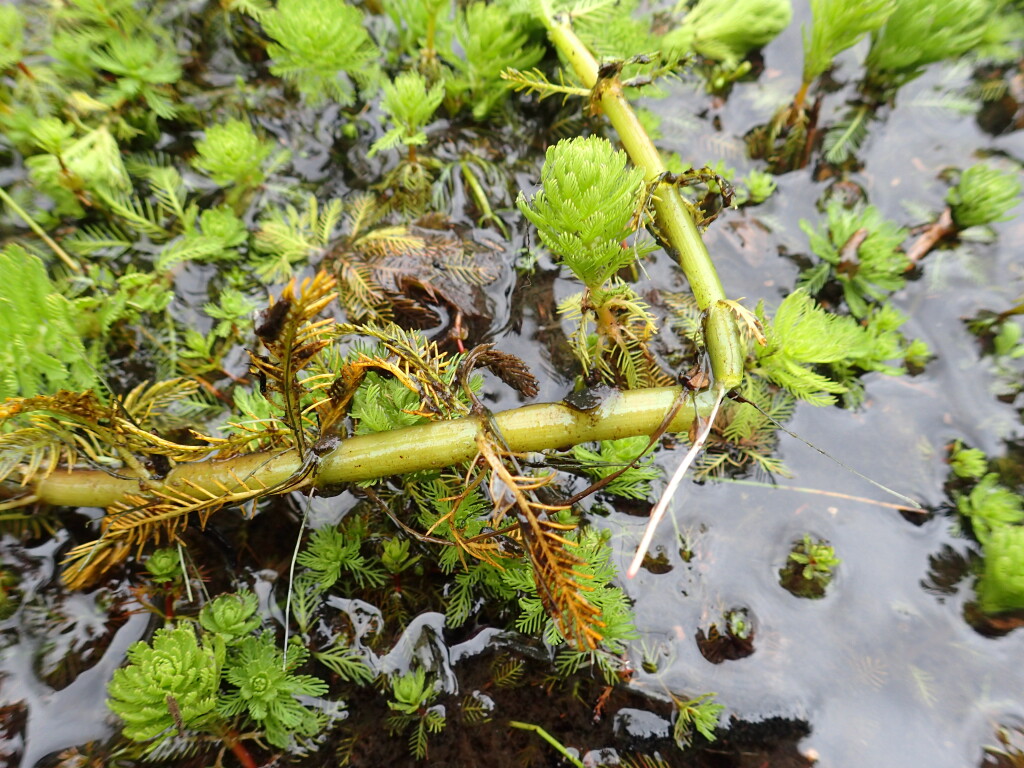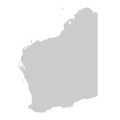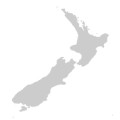Myriophyllum aquaticum
(Vell.) Verdc Parrot's FeatherPerennial aquatic or semi-aquatic herb, dioecious, glabrous; stems to 2 m long, 4–5 mm diam., glaucous, rooting at lower nodes. Leaves in whorls of 4–6, pectinate; submerged leaves oblanceolate, to 4 cm long; emergent leaves narrow-oblanceolate, to 3.5 cm long, 5–8 mm wide, glaucous, pinnae 18–36. Bracteoles subulate to trifid, 1.2–1.5 mm long, white. Male flowers absent in Australia. Female flowers shortly pedicellate, solitary; sepals 4, triangular, 0.4–0.5 mm long, white; petals absent; ovary 4-celled; styles clavate, 0.1–0.2 mm long; stigmas white. Fruit not formed in Australia. Flowers spring–summer.
VVP, VRiv, MuF, GipP, WaP, Gold, CVU, EGL, HSF, HNF. Also naturalised WA, SA, Qld, NSW, Tas. Native to South America. Of scattered occurrence in waterways and dams mostly in east of State.
A troublesome weed in south-eastern Queensland and northern New South Wales where it blocks creeks, drains and channels. Male plants are unknown outside South America, and even there fruits are rare. It spreads mainly by vegetative means with broken stem fragments rooting adventitiously.
Jeanes, J.A. (1996). Haloragaceae. In: Walsh, N.G.; Entwisle, T.J., Flora of Victoria Vol. 3, Dicotyledons Winteraceae to Myrtaceae, pp. 887–908. Inkata Press, Melbourne.
 Spinning
Spinning




